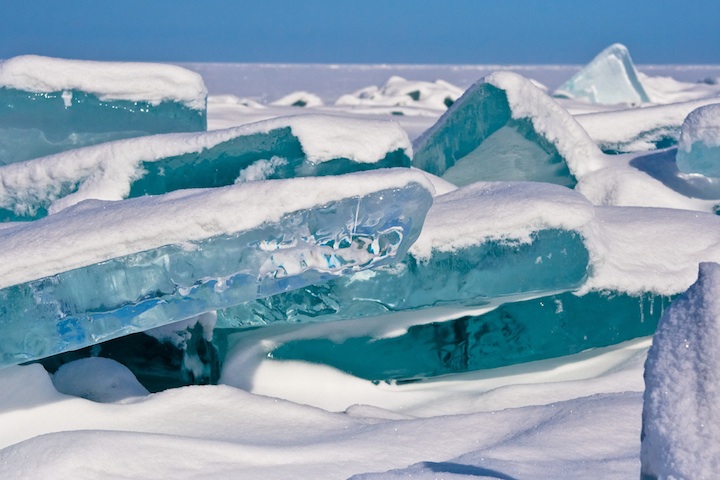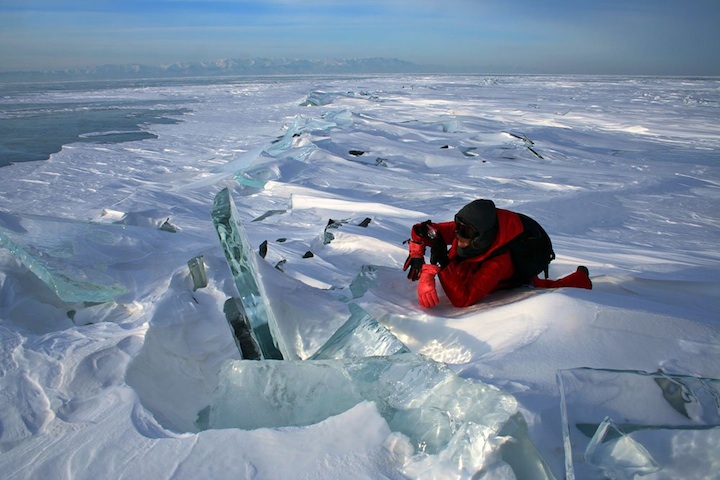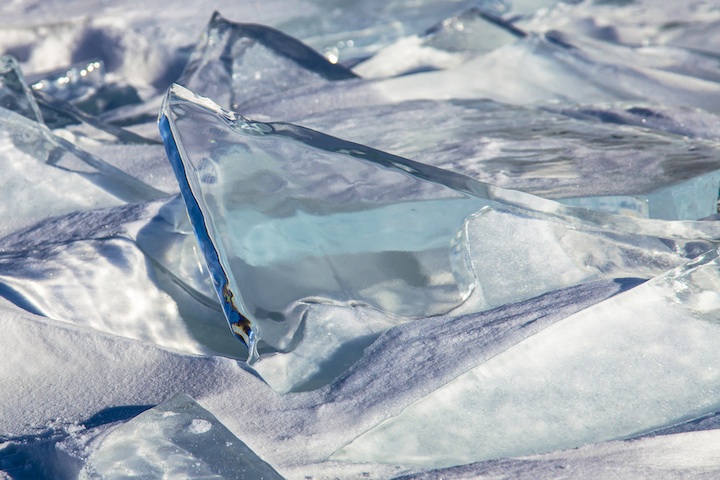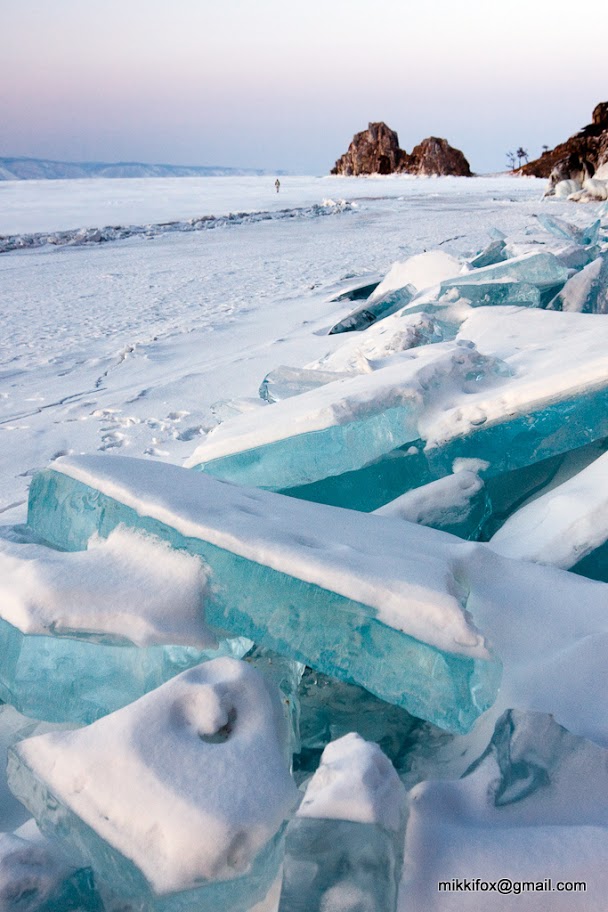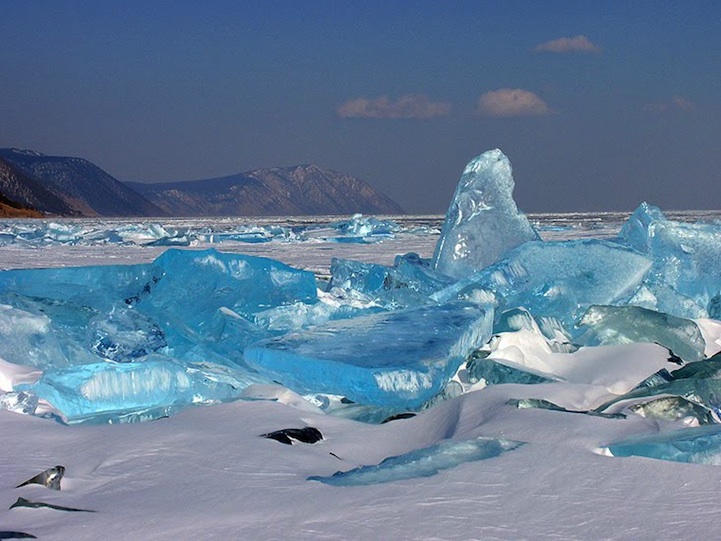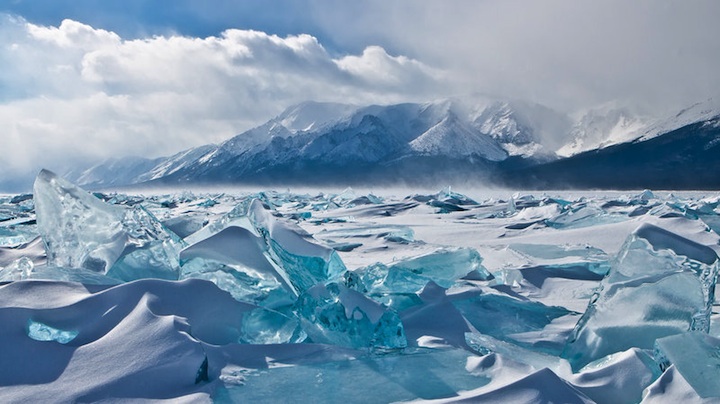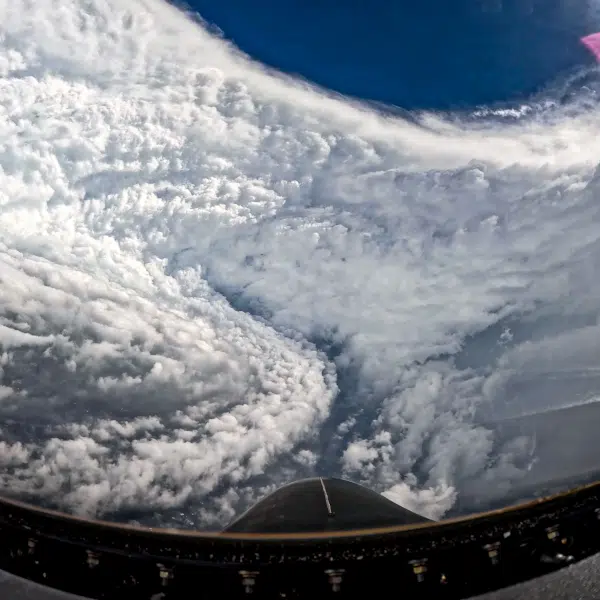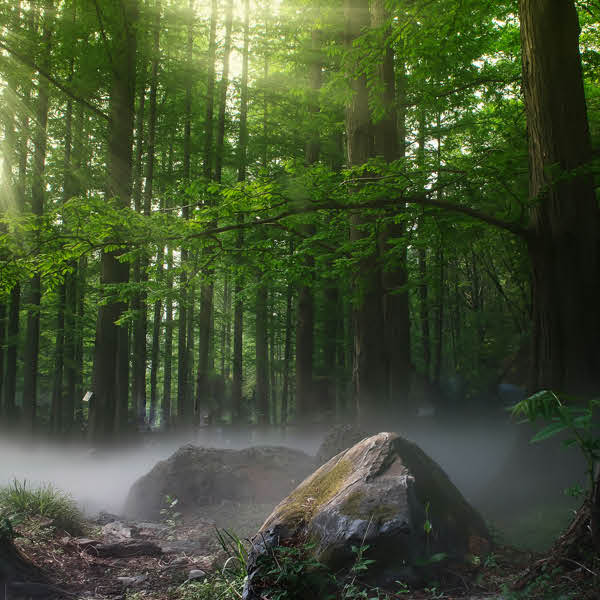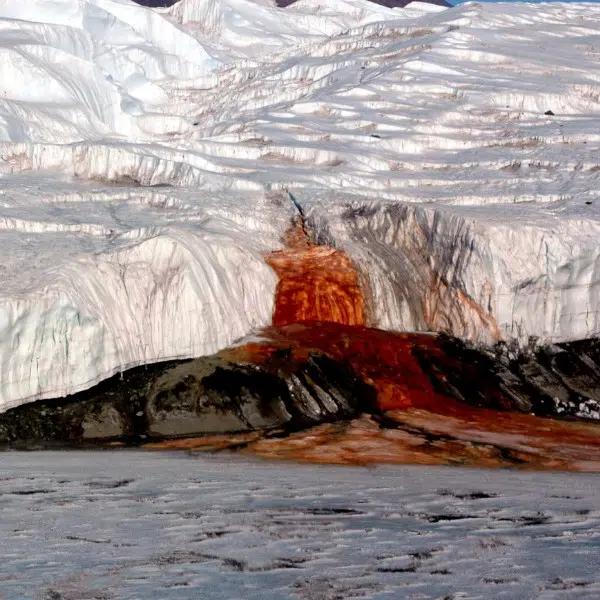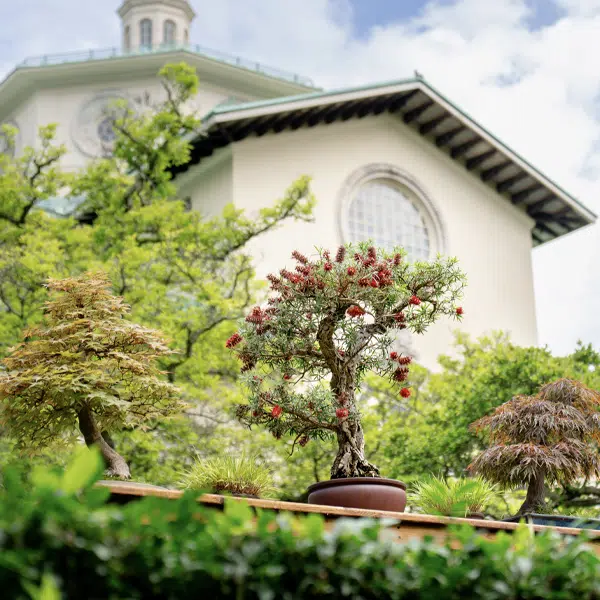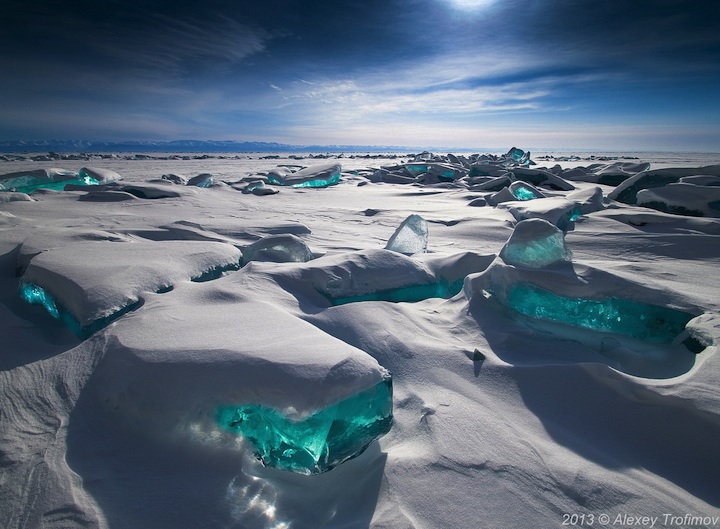
Lake Baikal, located in the southern part of eastern Siberia in Russia, is an incredible natural wonder of the world that one can only hope to visit at least once in their lifetime. It's not just the oldest freshwater lake on Earth, at 20 to 25 million years old, it's also one of the largest and deepest, holding an astounding one-fifth of the world's freshwater.
In the winter, for about five months or from January to May, the lake freezes over but the water is so clear that, from the surface, you can see an astounding 130 feet below you. A photographic worthy natural phenomenon occurs around a very specific time of year, March. Wind, temperature differences, frost and sun in the ice crust cause cracks and ice hummocks to form. Transparent and shining in a turquoise color, these masses of broken ice look like shards of glass rising into the sky. They are caused by the slow and unequal pressure in the main body of the packed ice as well as by the unequal structure and temperature. Now that's one for the bucket list.
Above photo by Alexey Trofimov
